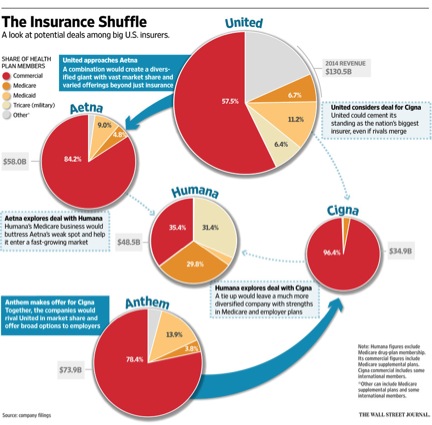I Told You What To Do 8 Years Ago
Stanley Feld M.D.,FACP,MACE
I started my blog Repairing The Healthcare System in 2006. I methodically described the defects in the Healthcare System.
I provided healthcare alternatives in policy and regulations to both Democrats and Republicans to Repair the Healthcare System.
No one listened to me.
In 2007 the healthcare system was unaffordable and unmanageable.
Republicans had some weak ideas and no inclusive business model for the future.
The election of President Obama and the partisan passage of Obamacare have accelerated our healthcare system’s demise.
I believe President Obama’s goal is to destroy the healthcare system. He wants it replaced with a single party payer system (2003). Consumers of healthcare know the government cannot manage healthcare.
American cannot sustain Obamacare financially. Consumers cannot be sustained medically with Obamacare or after the collapse of Obamacare with a government run single party payer system.
The obvious proof is the dysfunction and failure of the VA Healthcare System, Medicaid and Medicare.
All these healthcare systems are government run single party payer systems. All are unsustainable.
As I was archiving my blogs I ran across four blogs I wrote in 2007 outlining the problems and what should be done about them.
The government has made none of the repairs I have suggested. Obamacare has made the situation worse. I will present all four parts of “What Have I Said So Far? Spring 2007” consecutively as written.
“What Have I Said So Far? Spring 2007 Part 1
Stanley Feld M.D.,FACP,MACE
April 01, 2007 in Medicine: Healthcare System
In August 2006 I summarized my blog to that point. I outlined some important solutions necessary to Repair the Healthcare System.
One must ask: Do they really want to solve the problems in healthcare delivery in this country or are they focused on preserving their own vested interest to the exclusion of a breakthrough that might benefit not only their vested interests but the vested interest of all the stakeholders.
The questions were:
- How do we reduce the cost of medical care? • How do we provide affordable insurance for the 45 million people uninsured?
• How to we provide affordable medical care coverage so that all the patients can have access to medical care?
• How do we align all stakeholder incentives?
• How do we construct a system so that all the stakeholders make a reasonable return on investment?
• How do we close the holes in the system to eliminate abuse by stakeholders?
• How do we restore trust between stakeholders?
• How do we restore trust between the patient and physician?
• How do we stop secondary facilitator stakeholders from continuously destroying the patient physician relationship?
In reality, developing solutions to these questions are in themselves business opportunities for facilitator stakeholders that can help Repair the Healthcare System.
However, neither the insurance industry, hospital systems, nor the government see the long term advantage and economic opportunity.
In a comment to my blog Shel Isreal said “
98% of the people think it is broken and the other 2% work for the insurance industry.
The insurance industry has the money and the power.”
http://stanleyfeldmdmace.typepad.com/repairing_the_healthcare_/2007/01/the_ideal_elect.html.
However, we have demonstrated the abuse and misuse of the power of information technology by the insurance industry. The misuse and abuse has lead to further dysfunction in the healthcare system and mistrust by the hospitals and physicians.
The insurance industry and the government have used information technology to penalize both physicians and patients using the wrong data to draw their conclusions.
Insurance companies do not have the information technology resources to measure the correct parameters to measure quality care.
I do not see an attempt on their part to correct this deficiency. I only see a movement to make the healthcare system worse with a Pay for Performance (P4P) reimbursement system that is not well thought out. .
It is essential that the solutions I have proposed be coordinated and introduced simultaneously as a single plan rather than introducing elements of the solution separately.
Unfortunately, the government with the pressures of its present political vested interest influences finds it difficult to present the components of repair as a single plan.
The solutions will have to be driven by the consumer (the patient) and not the government. The patients have the power to drive the solutions because they are the users of the healthcare system. If they were the purchases of healthcare, some clever entrepreneur could provide the option for a compelling insurance product that could reward the patient for being responsible for their own care and well being.
The insurance produce could be built to fix the healthcare system.
All that is needed is for the government to write sensible regulations, enforce them and get out of the way.”
The opinions expressed in the blog “Repairing The Healthcare System” are, mine and mine alone
Please have a friend subscribe

